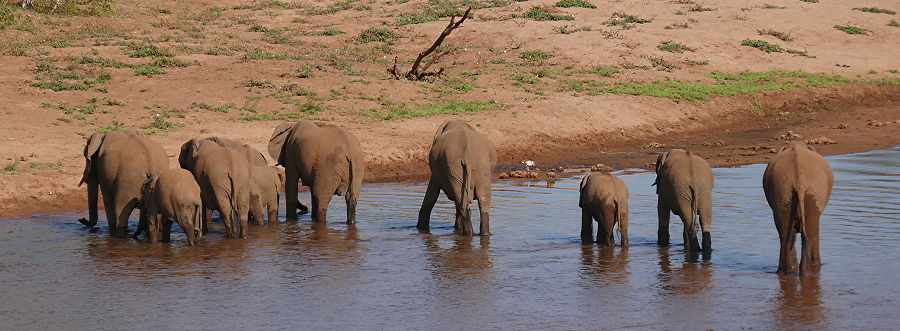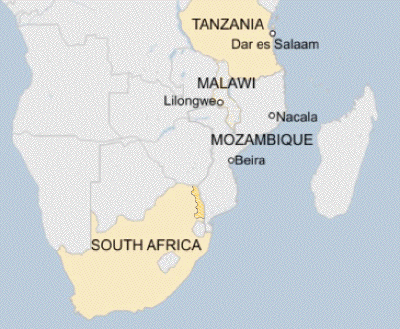
 We were set to go back to Vietnam and on to Cambodia, but Kaye's sister Carmel announced that she was planning a ten-day trip around Kruger National Park with her friend Judy, who lives in Durban, so we asked if we could join them. Suddenly we were going to Africa!
We were set to go back to Vietnam and on to Cambodia, but Kaye's sister Carmel announced that she was planning a ten-day trip around Kruger National Park with her friend Judy, who lives in Durban, so we asked if we could join them. Suddenly we were going to Africa!
Kruger National Park covers a huge area in the north-east of South Africa. It is not just popular with international visitors; South Africans go there in very large numbers. Accommodation in the favoured "rest camps" - really small villages with shops, restaurants and other services - can be booked out months in advance, so it helps to make your plans early. If you are planning more than about a week in the park, or expect to visit other parks in South Africa, it may be cost effective to pay an annual "conservation fee" rather than pay the daily rate.
South Africa, and particularly Johannesburg, has had a reputation for violence, robberies and other crimes. The situation has improved, but there are still areas and behaviours which are best avoided. Major roads, even in cities, have a speed limit of 120 kph and driving can be erratic, so your greatest risk may be of involvement in a traffic accident rather than a mugging. But Kruger is very safe; any sort of crime is rare and the speed limits are 50 kph on sealed roads and 40 kph on unsealed roads. You can, if you are really worried, avoid the rest of South Africa all together by booking a flight which lands at an airport inside the park, and collect a hire car when you arrive.
Park organisation and rules largely protect you from the animals. The rest areas with overnight accommodation are surrounded by electrified fences and you must be back in the rest areas before 5.00 pm. You are not allowed out of your car except at designated locations. If you do leave your car, anywhere, anytime, all the windows should be fully wound up to deter monkeys and baboons, and even then keep an eye out for them trying to remove your windscreen wipers or the rubber around the windows.
Many of the other animals are very used to vehicles and most will largely ignore them. So a powerful telephoto lens is not required to get good pictures of the larger wildlife; often you will be no more than ten or twenty metres away and sometimes considerably closer. On one occasion we could have put an arm out of the car window and patted a full-grown lioness on the head! Despite the proximity she showed no interest in us at all. On the other hand good binoculars are very helpful to pick out details on the snaller animals and birds.
Guided walks with an armed ranger can be organised in Kruger, but children must be over 12 and if you are over 60 you will need a doctor's certificate. These walks are not available at all times of the year and have limited places so are often booked out twelve months in advance; therefore if you want to go on one you have to organise it very early.
All of the shops in the park have available for sale a large-format booklet in numerous languages with up-to-date maps of the park and also pictures of all the animals and birds you may see to help you to identify them. Purchasing one of these booklets as soon as you arrive is a very good idea.

The trip is divided into sections:
Each section has its own story and slideshows.
In addition there is a
since we had a lot of short clips of various animals.This was a trip mostly aimed at seeing African wildlife. We weren't especially motivated by the "big five" - we were happy to see all the animals and plants that we came across along the way. Whenever we saw yet another elephant or giraffe, it was easy to think "just another one" but then they captured our hearts all over again, so we never really got tired of seeing giraffes and elephants. In Kruger Carmel and Judy were always on the lookout for interesting birds since they have had a shared interest in them for many years, so they often noticed and could identify birds which we might have missed or not paid so much attention to.